
Asturias, officially the Principality of Asturias, is an autonomous community in northwest Spain.
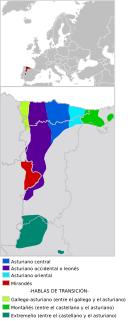
Asturleonese is a Romance language spoken primarily in northwestern Spain, namely in the historical regions and Spain's modern-day autonomous communities of Asturias, northwestern Castile and León and Cantabria, and also in a small neighbouring area of Portugal. The name of the language is largely uncommon among its native speakers, as it forms a dialect continuum of mutually intelligible varieties and therefore it is primarily referred to by various regional glossonyms like Leonese, Cantabrian, Asturian or Mirandese. Extremaduran is sometimes included as well. Asturleonese has been classified by UNESCO as an endangered language, as Asturian is being increasingly replaced by Spanish.

Prince or Princess of Asturias is the main substantive title used by the heir apparent or heir presumptive to the throne of Spain. According to the Spanish Constitution of 1978:
Article 57 [...] 2. The heir apparent or presumptive, from birth or event that makes him such, will have the dignity of Prince of Asturias and other titles traditionally linked to the successor of the Crown of Spain.

The Academia de la Llingua Asturiana or Academy of the Asturian Language (ALLA) is an Official Institution of the Government of the Principality of Asturias that promotes and regulates the Asturian language, a language of the Spanish autonomous community of Asturias. Among its principal objectives are investigating and normalizing the Asturian Language, developing a dictionary, promoting its use and education and awarding literary prizes. It has 21 full members, 19 foreign members and 15 honorary members, and its current president is Ana María Cano González.

Leonese is a set of vernacular Romance language varieties currently spoken in northern and western portions of the historical region of León in Spain and a few adjoining areas in Portugal. In this narrow sense, Leonese is distinct from the dialects grouped under the Asturian language. There is no real linguistic division, though; it is only a purely political and identitary division, as dialectal areas are in fact shaped along a north-south axis, following the migration of population from north to south during the Middle Ages (Reconquista). In the past, it was spoken in a wider area, including most of the historical region. The current number of Leonese speakers is estimated at 20,000 to 50,000. The westernmost fringes of the provinces of León and Zamora are in the territory of the Galician language, although there is dialectal continuity between the linguistic areas.

A parroquia is a population entity or parish found in Galicia and Asturias in north-west Spain. They are entities with a territorial scope lower than municipality and have their own legal personality. They usually, but not always, coincide with the ecclesiastic divisions as they originated on pair with them.
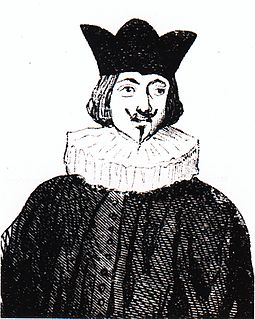
Antón González Reguera, better known as Antón de Marirreguera(Pronunciation) (help·info) was the author of the first preserved literary works written in the Asturian language, the «Pleitu ente Uviéu y Mérida pola posesión de les cenices de Santa Olaya», of 1639, that takes the first prize in a poetical contest dedicated to Saint Eulalie. Other works include the «Diálogu políticu», the fables «Dido y Eneas» and «Hero y Lleandro» and the entremeses «L'ensalmador» (The Healer, «L'alcalde» and «Los alcaldes».

Asturian is a West Iberian Romance language spoken in the Principality of Asturias, Spain. Asturian is part of a wider linguistic group, the Astur-Leonese languages. The number of speakers is estimated at 100,000 (native) and 450,000. The dialects of the Astur-Leonese language family are traditionally classified in three groups: Western, Central, and Eastern. For historical and demographic reasons, the standard is based on Central Asturian. Asturian has a distinct grammar, dictionary, and orthography. It is regulated by the Academy of the Asturian Language. Although it is not an official language of Spain it is protected under the Statute of Autonomy of Asturias and is an elective language in schools. For much of its history, the language has been ignored or "subjected to repeated challenges to its status as a language variety" due to its lack of official status.
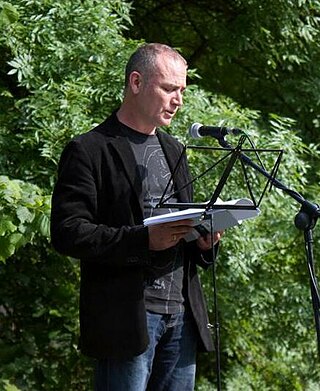
Xuan Bello Fernán is a Spanish poet and one of the best-known contemporary Asturian writers.
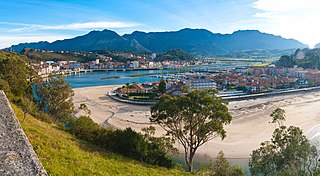
Ribadesella is a small municipality in the Autonomous Community of the Principality of Asturias, Spain. Known for its location on the Cantabrian Sea, at the outlet of the River Sella, Ribadesella is a town that forms part of the Picos de Europa. It is bordered on the east by Llanes, on the south by Cangas de Onís and Parres, and on the west by Caravia. Ribadesella is the home town of Queen Letizia of Spain.
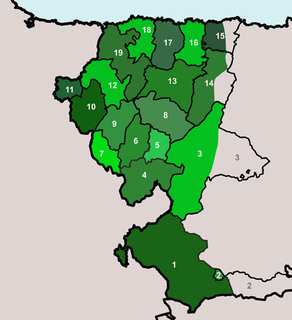
Galician–Asturian or Eonavian is a set of Romance dialects or falas whose linguistic dominion extends into the zone of Asturias between the Eo River and Navia River. The dialects have been variously classified as the northeastern varieties of Galician, as a linguistic group of its own, or as a dialect of transition between Galician and Asturian.
Partíu Asturianista (PAS) is a nationalist political party from Asturias, Spain, founded in 1985 by Xuan Xosé Sánchez Vicente.

Aurelio González Ovies is a Spanish writer and poet from Asturias. He has a Ph.D in Classical Philology and he is a Professor of Latin Philology at the University of Oviedo. In words of the writer Victor Alperi:

Conceyu Bable was an Asturian association legalized in 1976, which objective was the recovery and dignification of Asturian Language.
The National Prize for Asturian Literature is a literary award given by the Academy of the Asturian Language every three years to writers who are most known for their literary career in the Asturian language. The prize cannot be shared between more than one author nor cannot it be awarded posthumously. It was first awarded in 2017.
Alicia García-Salcedo González, was an Asturian Catholic lawyer known for becoming in 1935 the first lawyer of Asturies.
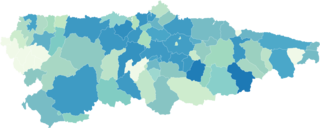
The COVID-19 pandemic in Asturias is part of the Spanish outbreak of the ongoing worldwide COVID-19 pandemic.
Pablo Xuan Manzano Rodríguez a scholar of Asturian language. He carried out his basic education in his home village and later on he studied teaching in the University School of Oviedo. He started to work at the age of 20 in the school of L'Entregu, and afterwards he also worked in Gijón, Amieva and Campo de Caso before he started working in the Juan José Calvo Miguel High School in Sotrondio. He is a member of the Council of Asturian Communities representing the Academy of the Asturian Language, of which he has been a fellow since 1984.
Enriqueta González Rubín (1832-1877) was a Spanish writer. Her 1875 Viaxe del tío Pacho el Sordo a Uviedo is the earliest known novel published in Asturian.















